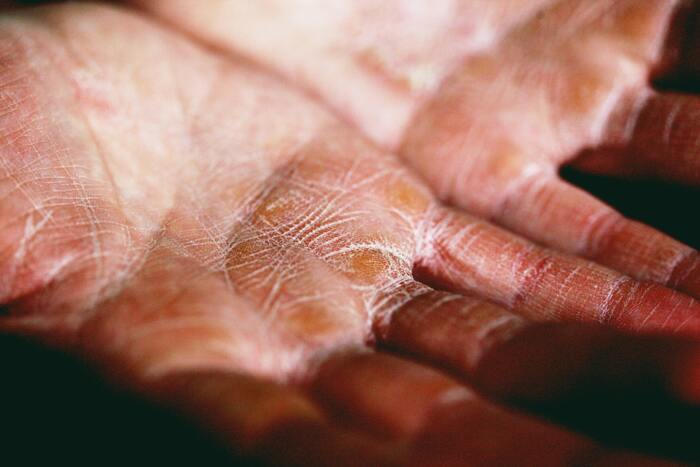Are you wondering about the benefits and drawbacks of infrared saunas? Perhaps you hope to build one in your home?
Infrared saunas have surged in popularity due to purported health advantages over traditional saunas. However, research on risks and drawbacks is still emerging. Infrared saunas use infrared light to heat the body directly rather than warming the surrounding air.
Some studies show infrared provides comparable cardiovascular and stress relief benefits as traditional saunas while posing less risk of overheating at lower operating temperatures. However, potential drawbacks include less standardized safety regulations and uncertainty around the long-term impacts of the newer technology. While promising for increased calorie burn, blood flow, and pain relief, some benefits lack robust data.
Traditional saunas have more drawbacks and risks from dangerously high temperatures, while infrared saunas provide comparable cardiovascular and muscular health benefits with lower risk of heat-related illness and access for more vulnerable groups. Nonetheless, it might still be worth looking into the benefits and drawbacks of traditional saunas.
In the remainder of this article, we’ll explore the latest research surrounding the use of infrared saunas – analyzing proposed benefits for skin health, inflammation, weight loss, anti-aging, and more while also discussing drawbacks around fertility impacts, isolating EMF exposure, and precautions for those with implants or medical devices. Getting an informed perspective on the pros and cons allows for wise choices about integrating infrared saunas into one’s wellness regimen.
Table of Contents
- Advantages of Using Infrared Sauna
- Advanced Infrared Sauna Advantages
- Disadvantages of Using Infrared Sauna
- Lesser Known Infrared Sauna Disadvantages
- FAQs
- Conclusion
Advantages of Using Infrared Sauna
The great thing about infrared saunas is that they have extra benefits in addition to those offered by traditional saunas. So, in order to know whether a traditional or infrared sauna is best for you, consider the following pros of the infrared route.
If you would like to know more about how an infrared sauna works, follow this link.

i. Promotes Good Sleep
If you have trouble falling asleep or staying asleep then you may have tried all possible traditional remedies. However, infrared saunas, although they are not normally people’s first choice, can significantly help with sleep issues.
The science behind this is that while you are in the sauna the infrared penetrates deep into your skin, heating you up from within, but when you exit the sauna into the cooler air, this floods your brain with melatonin, which is famously known for promoting good sleep.
So, you are essentially forcing your body to produce the sleep hormone in a natural way. Studies have shown that many people suffering from sleep disorders found infrared saunas to help with their issues.
ii. A Lower Heat
One of the main differences between a traditional sauna and an infrared sauna is that the latter can operate at a lower temperature, but still provide you with the same result. There is quite a big difference between the two: a traditional sauna runs up to 180 degrees Fahrenheit, whereas an infrared sauna only needs to run up to 140 degrees Fahrenheit.
If you struggle with the high temperature of a traditional sauna but still want to reap the benefits then consider looking into an infrared sauna.
iii. Pain Relief
One of the best pros of infrared saunas is the fact that they help with pain relief. For both local and chronic pain, infrared saunas have been shown to help. This is because they promote blood flow, which can help with swelling, mental stress, and physical pain.
Advanced Infrared Sauna Advantages
Using the sauna on a regular basis offers many more benefits, such as:
Hormone balance: The heat and electromagnetic energy from infrared saunas penetrate tissue to improve circulation and cell function. This stimulates the endocrine system, helping balance hormone production. Sweating out toxins also lowers inflammation that disturbs hormone levels. Relaxing in a sauna session further calms the mind and body. Using an infrared sauna several times a week can help re-establish optimal hormone interplay for better health and vitality.
Osteoporosis: The penetrating heat from infrared saunas warms deep tissue and improves circulation. Better blood flow delivers more nutrients and minerals to help strengthen bones weakened by osteoporosis. Infrared therapy also boosts collagen production, important for bone matrix health. The induced sweating eliminates toxins that contribute to inflammation and bone loss. Used consistently, infrared saunas can complement osteoporosis treatment by providing warmth, detoxification, and stimulating bone-building processes.
Sinus infections: The dry heat from infrared saunas helps thin out mucus and open sinus passages. As it penetrates tissue, it increases blood flow and circulation. Better circulation helps reduce inflammation and delivers immune cells to help clear infection. The induced sweating also releases toxins and bacteria from sinus tissues. Using an infrared sauna a few times a week, along with medication, can help speed recovery from sinus infections by decreasing congestion and enhancing immune response.
Beard growth: Infrared saunas use light waves to deeply penetrate and heat tissue. This improves circulation, delivering more oxygen and nutrients for hair follicles to utilize. The induced sweating also cleans out pores and follicles so hair can grow unobstructed. Furthermore, infrared light energizes cellular function and metabolism to activate faster healthier growth. By providing these benefits, using an infrared sauna a few times a week can help boost beard thickness and fullness.
Rosacea: The heat and induced sweating from infrared saunas help dilate blood vessels and flush toxins from the skin. This improves circulation and reduces inflammation, two key factors that contribute to rosacea flares. The detoxification and skin cleansing provoked by regular infrared sauna use help keep pores clear of bacteria and mites that trigger redness. By decreasing swelling and flushing away skin impurities, infrared saunas can help manage rosacea symptoms.
Shingles: The heat from infrared saunas penetrates tissue and dilates blood vessels, increasing circulation. This reduces inflammation and pain associated with shingles rashes. Additionally, the induced sweating allows the body to eliminate toxins, bacteria, and viruses more efficiently, while also lowering stress hormones that exacerbate outbreaks. Using infrared saunas a few times per week can thus help manage shingles duration and symptoms.
Varicose veins: Infrared saunas use heat and light that causes blood vessels to dilate, increasing circulation. This improved blood flow helps reduce pain and the appearance of varicose veins. The warmth also relaxes muscles and eases aches from pooled blood. Regular use strengthens vein walls over time. By reducing swelling and improving overall circulation, infrared saunas can be an effective option to help manage varicose veins.
Disadvantages of Using Infrared Sauna
Although infrared saunas can offer some great benefits, there are also some cons to consider before you use them. If you have tried an infrared sauna but are worried about the effect it had on you, see here.
i. Dehydration
One of the main differences between a traditional sauna and an infrared sauna is that infrared saunas use light to create heat, which produces dry heat, rather than steam, like a traditional sauna, which produces wet heat.
One of the cons of choosing the infrared sauna is that this dry heat can cause dehydration as it will draw the moisture out of your body. You should always make sure that you are not overheating while using an infrared sauna by drinking a lot of water.

ii. Dry Skin
Because of the dry heat used in infrared saunas, there will be negative health effects on your skin. This will include dry skin, which can cause additional problems if you suffer from skin issues such as eczema or psoriasis.
You should always consult with your doctor before using an infrared sauna if you have any skin concerns. Moisturizing your skin both before and after using an infrared sauna can help to combat this con.
iii. Bad for Some Health Conditions
Although there are many different health benefits to infrared saunas, they do not work for everyone. Some people should avoid infrared saunas if they have certain diseases such as cardiovascular problems or hypotension.
If you have any health conditions that may be exacerbated by extreme and/or dry heat, consult with your medical professional before using an infrared sauna.
Lesser Known Infrared Sauna Disadvantages
Some infrared sauna drawbacks that you may not know of but might suffer from are:
Hyperpigmentation: While infrared saunas can aid skin health, heat and sweating may irritate sensitive skin prone to pigmentation issues. Increased blood flow might spread melanin deposits rather than lighten them. The detox process can also pull toxins to the skin surface, darkening pigmented areas. Those with hyperpigmentation disorders should use caution, start slowly with brief infrared sessions, and stop if any irritation or skin worsening occurs until consulting a dermatologist.
Melasma: People with melasma, a common pigmentation disorder, should use caution with infrared saunas. The heat and sweating can inflame sensitive skin and spread melanin deposits rather than improve them. Infrared rays may also trigger excess melanin production and darken pigmented patches. Those prone to melasma flares should avoid infrared saunas or start very slowly, discontinuing use if any irritation or worsening of the skin occurs. Consulting a dermatologist is recommended.
FAQs
Is It OK to Use the Infrared Sauna Every Day?
Although most spas will recommend that you need three to four sessions of infrared sauna every week, it is perfectly fine to use the infrared sauna every day as long as you are in good health, have no issues that may be made worse by using the sauna and have not noticed any issues with previous sauna use.
However, there are a few instances when you should avoid using the sauna every day. These include if you have been drinking alcohol (even if you are in good health) if you have or have recently had a fever, or if you are dehydrated. This is because all of these problems will be made worse by the dry heat of the infrared sauna.
How Long Should You Stay in an Infrared Sauna?
As with a traditional sauna, you should try to steadily increase the amount of time that you spend in the infrared sauna. If you have never used an infrared sauna before then you should start with just 10 to 15 minutes for one session and you can slowly increase this until you reach 30 minutes.
Most saunas will have a timer that you can use to make sure that you are not spending too long in the sauna. You can also easily change the temperature in an infrared sauna. A lower temperature will mean that you can spend longer in the sauna.
What Are the Potential Side Effects of Infrared Saunas?
Infrared saunas are generally considered safe, but some users may experience minor side effects. You might feel dehydrated or dizzy due to excessive sweating, so ensure that you drink enough water before and after the session. Some people may also experience overheating, so it’s important to listen to your body and adjust the temperature or duration if necessary. It’s also possible to experience mild headaches and nausea, especially if you’re not accustomed to the heat.
Can Infrared Saunas Cause Damage to the Eyes or Skin?
When used properly, infrared saunas pose a low risk of causing damage to your eyes or skin. The infrared wavelengths used in these saunas do not contain the harmful UV radiation found in sunlight. However, it’s essential to maintain a moderate temperature and limit the duration of your sessions to not expose your skin to excessive heat, which may cause dryness or irritation.
How Long Should One Use an Infrared Sauna to Experience Benefits?
To experience the benefits of infrared saunas, you should start with shorter sessions of around 15-20 minutes and gradually increase the duration as your body becomes accustomed to the heat. Many users find that sessions of 30-45 minutes, 3-4 times a week, provide them with the desired results. Keep in mind that the optimal duration may vary, so it’s important to listen to your body and adjust as needed.
Conclusion
Infrared saunas are a fantastic way to ensure that you keep your body healthy. They are a much better option for those with a low tolerance for heat but who still want to reap the benefits of using a sauna.
However, you should always make sure that it is the right option for you by making sure that you are in good enough health to use the facility and that it will not make any pre-existing health conditions worse.
To sum up, the main disadvantage of using an infrared sauna is the dryness of the heat, which can pull moisture from your body and skin. However, if this is not a concern then you can enjoy the benefits of better sleep, a more relaxed mind, and pain relief.
(Feature image by OpenClipart-Vectors from Pixabay)


